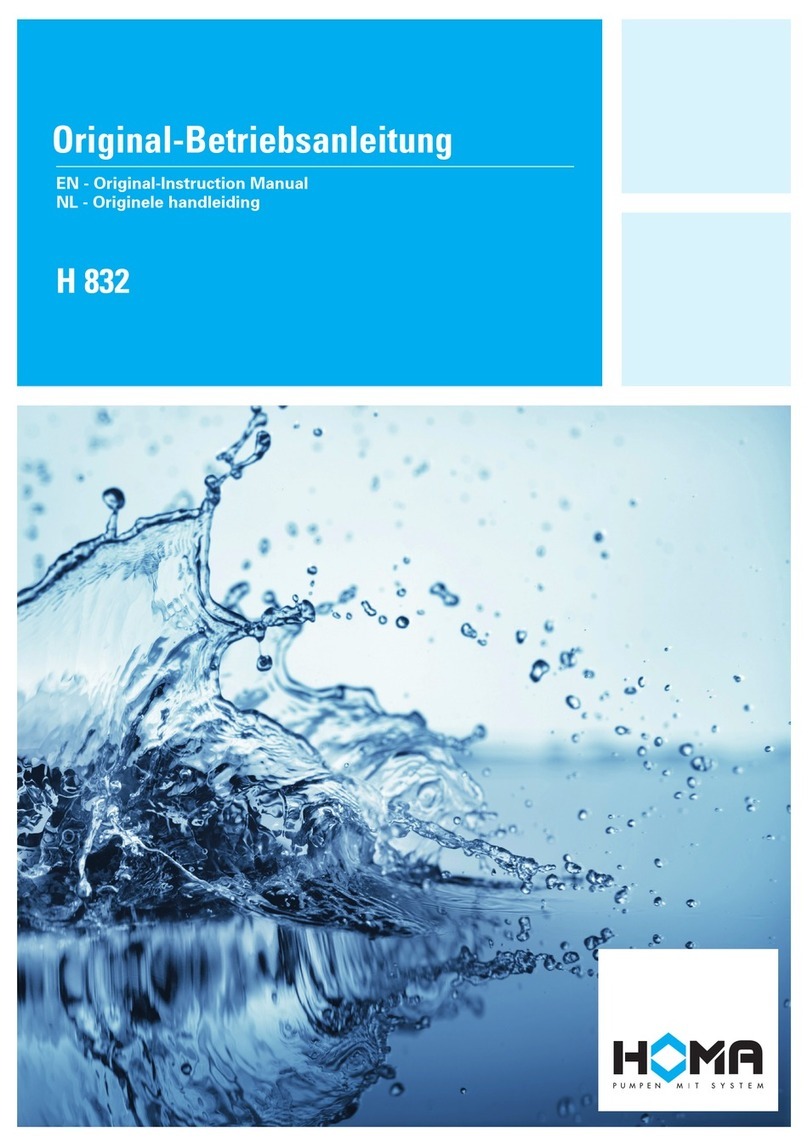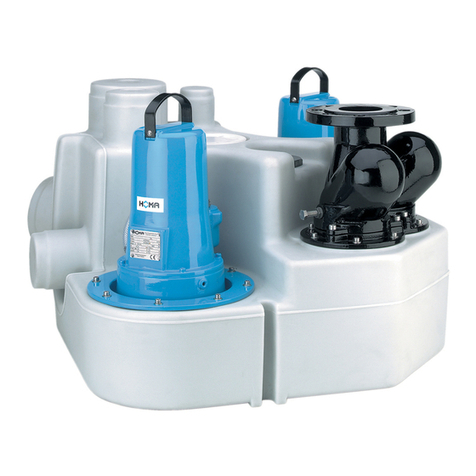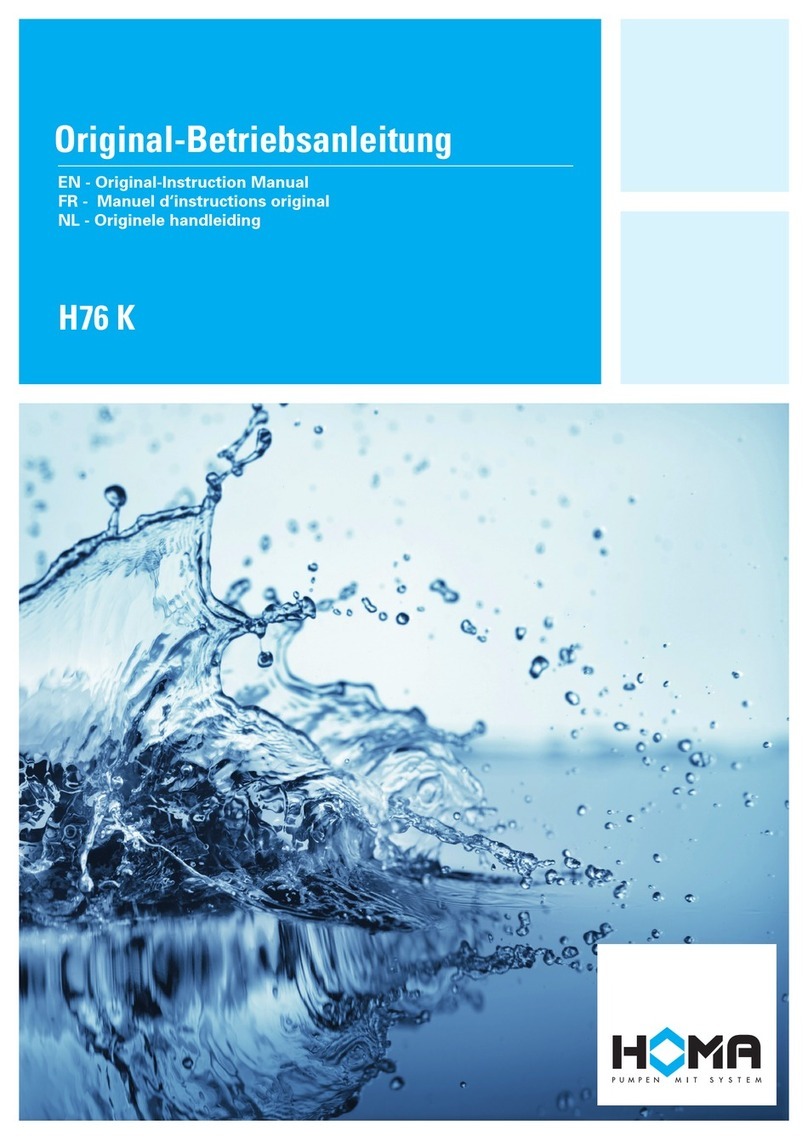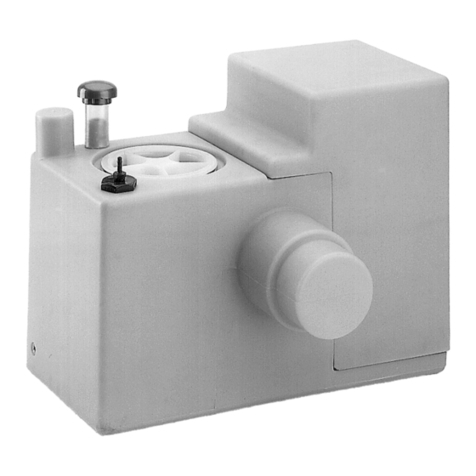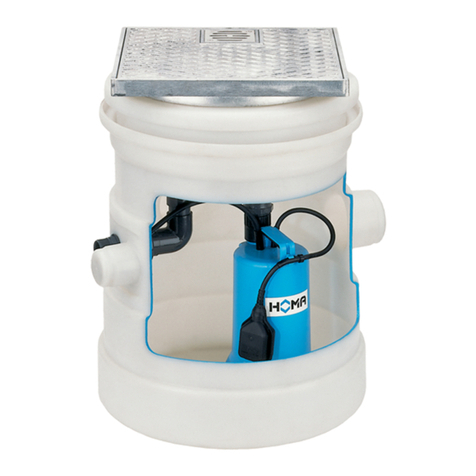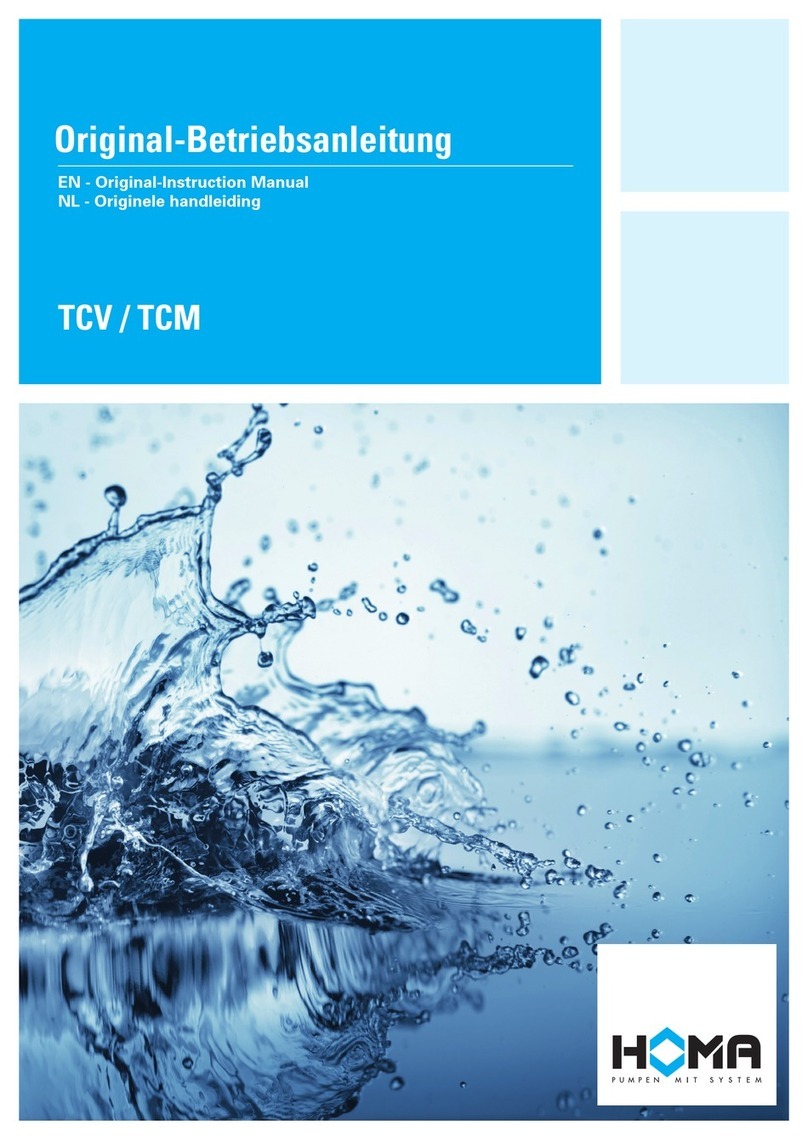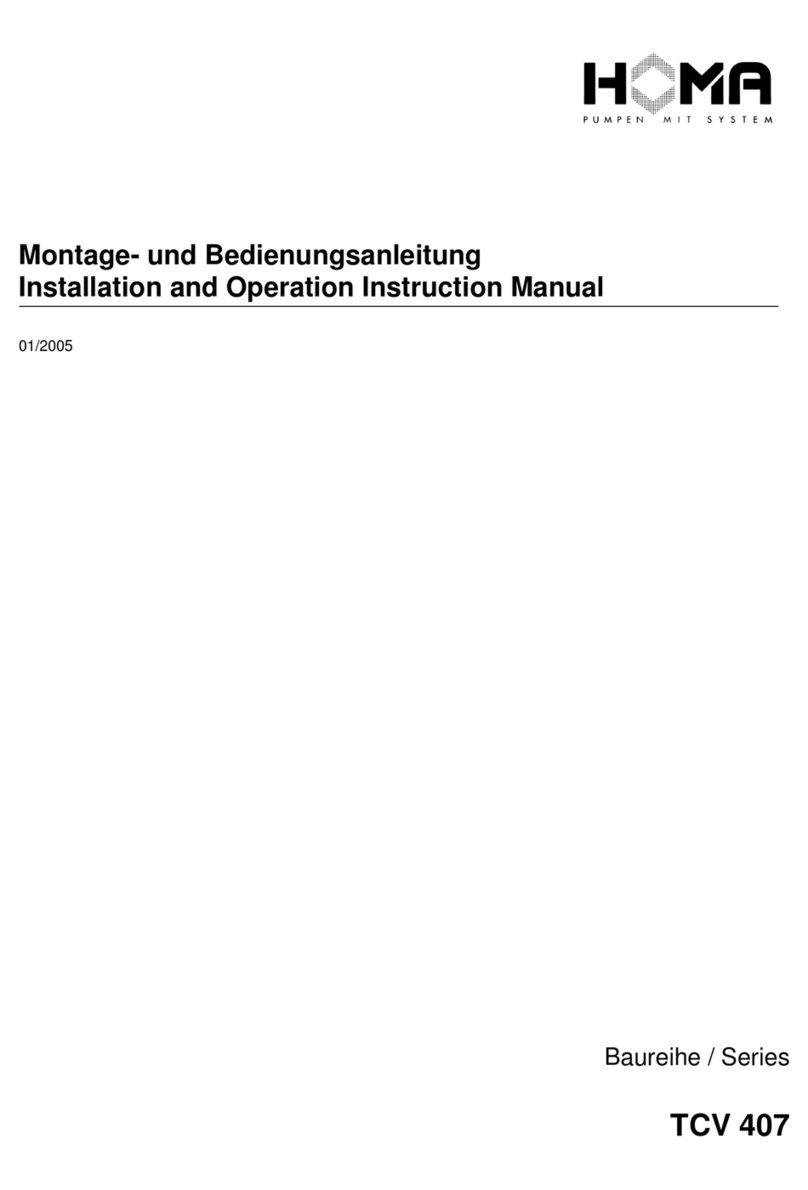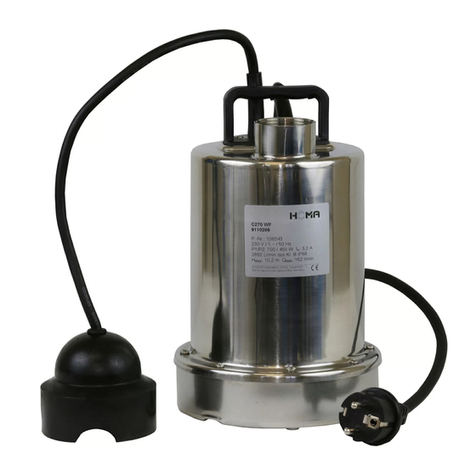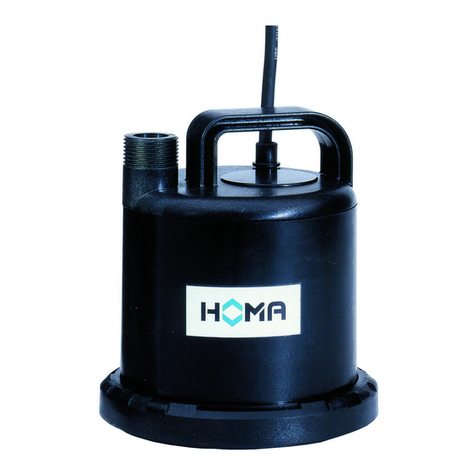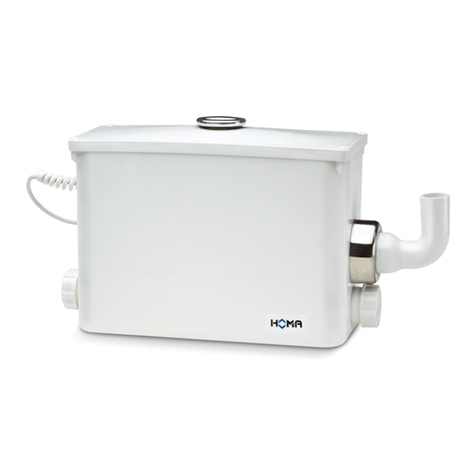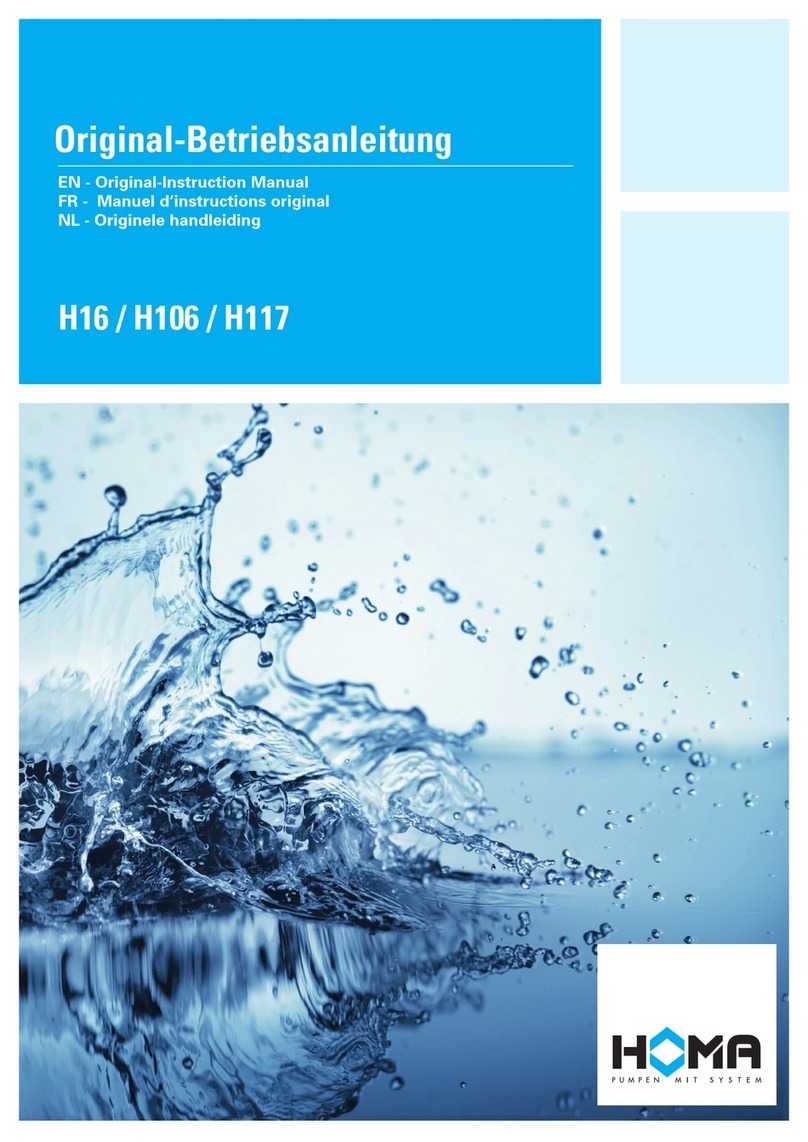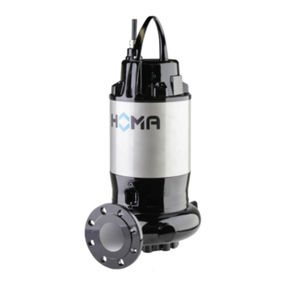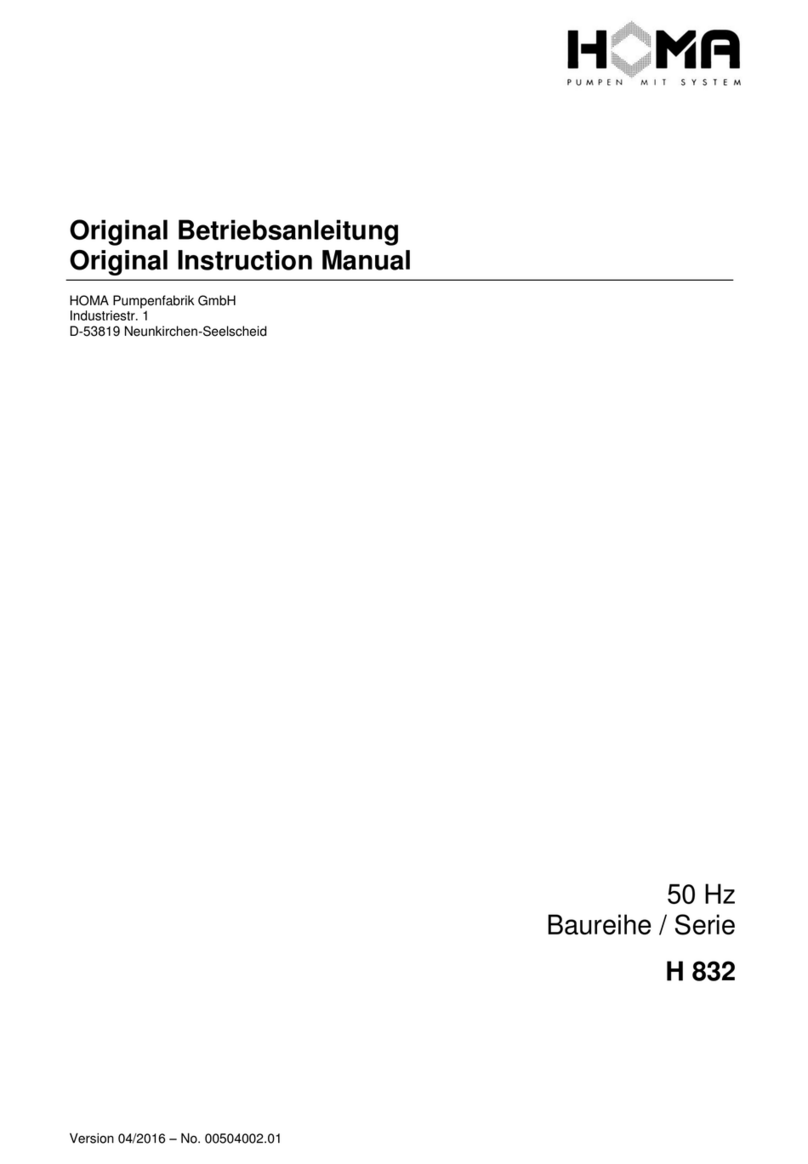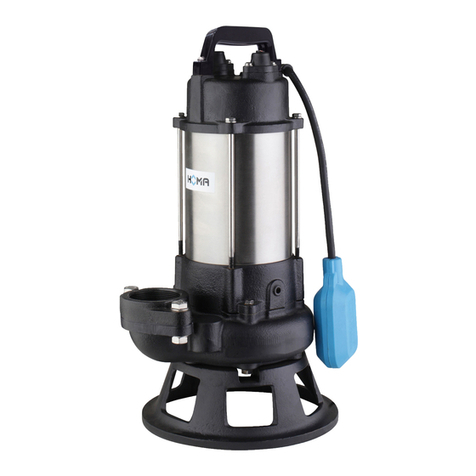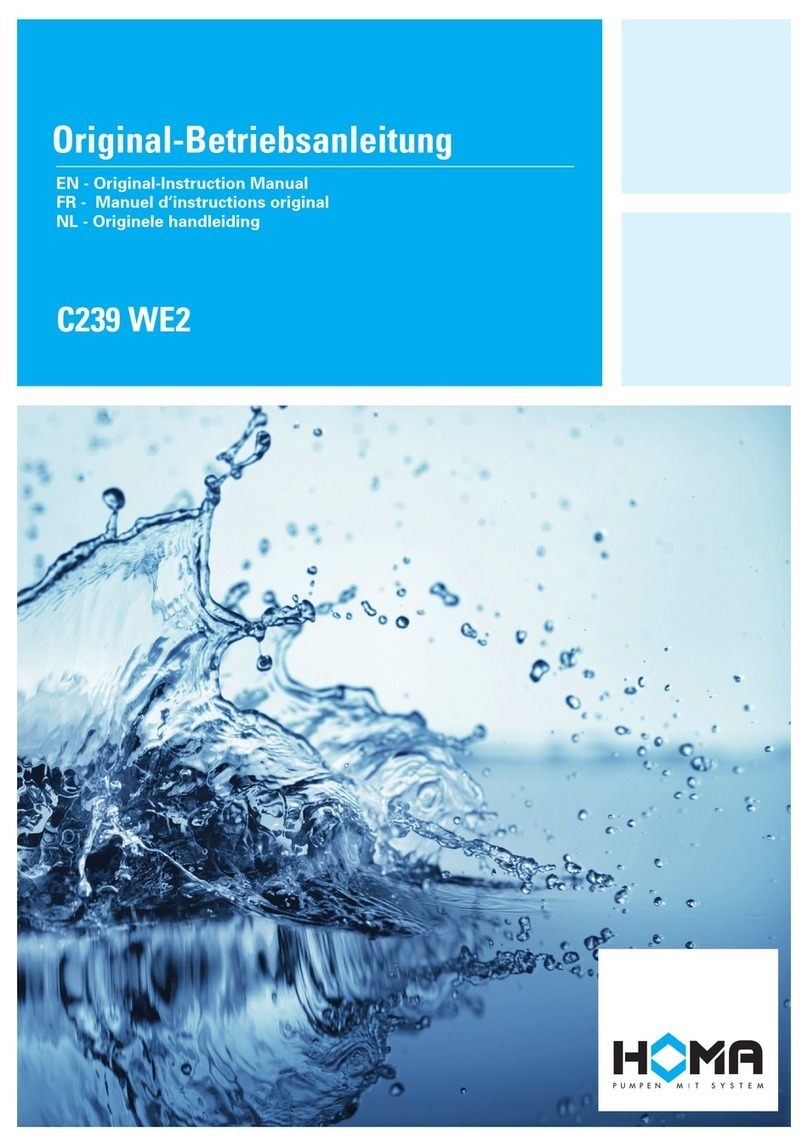
English | 05
2.5. Operating procedure
When operating the product, always follow the locally
applicable laws and regulations for work safety, accident
prevention and handling electrical machinery. To help to
ensure safe working practice, the responsibilities of em-
ployees should be clearly set out by the owner. All per-
sonnel are responsible for ensuring that regulations are
observed. Certain parts such as the rotor and impeller ro-
tate during operation in order to pump the fluid. Certain
materials can cause very sharp edges on these parts.
Beware of rotating parts!
The moving parts can crush and sever limbs. Never
reach into the pump unit or the moving parts during
operation. Switch off the machine and let the moving
parts come to a rest before maintenance or repair
work!
2.6. Safety and control devices
Our products are equipped with various safety and control
devices. These include, for example moisture sensors and
temperature sensors. These devices must never be dis-
mantled or disabled. Equipment such as thermo sensors,
float switches, etc. must be checked by an electrician
for proper functioning before start-up. Please remember
equipment such as PT100 temperature monitors or float
switches require the use of a HOMA GO switch for con-
nection. Please contact your HOMA distributor for infor-
mation.Personnel must be informed of the installations
used and how they work.
Caution!
Never operate the machine if the safety and monitor-
ing devices have been removed or damage, or if they
do not work.
2.7. Operation in an explosive atmosphere
Products marked as FM approved for suitable operation in
explosive atmosphere, are designed for Class I, Division
1, Groups C and D and Temperature class T4. The per-
mitted ambient temperature is between -4°F and 104°F.
The enclosures protection class is IP68. The products
must meet certain guidelines for this type of use. Certain
rules of conduct and guidelines must be adhered to by
the operator as well. Products that have been approved
for operation in an explosive atmosphere are marked as
explosion-proof rated by FM. In addition, an “FM” symbol
must be included on the name plate!
2.8. Sound Safety
Depending on the size and capacity (kW), the products
produce a sound pressure of up to110 dB. The actual
sound pressure, however, depends on several factors.
These include, for example, the installation type (wet, dry,
transportable), fastening of accessories (e.g. suspension
unit) and pipeline, operating site, immersion depth, etc.
Once the product has been installed, we recommend that
the operator make additional measurements under all op-
erating conditions.
Caution: Wear ear protectors! In accordance with
the laws in effect, guidelines, standards and regula-
tions, ear protection must be worn if the sound pres-
sure is greater than 85 dB (A)! The operator is re-
sponsible for ensuring that this is observed!
2.9. Pumped fluids
Each pumped fluid differs in regard to composition, cor-
rosiveness, abrasiveness, TS content and many other
aspects. Generally, our products can be used for many
applications. For more precise details, see chapter 3, the
machine data sheet and the order confirmation. It should
be remembered that if the density, viscosity or the general
composition change, this can also alter many parameters
of the product. Different materials and impeller shapes
are required for different pumped fluids. The more exact
your specifications on your order, the more exactly we can
modify our product to meet your requirements.
If the area of application and/or the pumped fluid change,
we will be happy to offer supportive advice.
When switching the product into another pumped fluid,
observe the following points:
• Products which have been operated in sewage or
waste water must be thoroughly cleaned with pure
water or drinking water before use.
• Products which have pumped fluids which are haz-
ardous to health must always be decontaminated
before changing to a new fluid. Also clarify whether
the product may be used in a different pumped fluid.
• With products which have been operated with a
lubricant or cooling fluid (such as oil), this can escape
into the pumped fluid if the mechanical shaft seal is
defective.
Danger - explosive fluids!
It is absolutely prohibited to pump explosive liquids
(e.g. gasoline, kerosene, etc.). The products are not
designed for these liquids!
2.10. Danger due to spark generation
Mechanically generated sparks can ignite flammable gas-
es and condensates. According to EN1127-1 Para.6.4.4,
sparks must also be excluded for category 2 in normal
operation. In normal operation no spark generation is pos-
sible due to fluid covering (medium covering of the pump
hydraulic).The ingress or suction of foreign bodies (stones,
pieces of metal, etc.) through the suction nozzles into the
pump hydraulic is not possible in an expected case of mal-
function in which the enclosure fails as the pump cannot
suck up pumping medium nor its containing solids.
In the ventilated shaft, the explosion-protected submers-
ible motor pumps are drained via a drain system with
two guide tubes of galvanized steel, between their guide
claws of grey cast iron that guide into the automatic cou-
pling arrangement.
The guide velocity, with max 0.1 m/s (10cm/s) is so low
that no sparks can be generated even in the most dis-
advantaged conditions. In the first installation, the guide
claws of the drain arrangement should be lubricated with
ball bearing grease in order to supredd heat and spark
generation in the most disadvantaged case.
